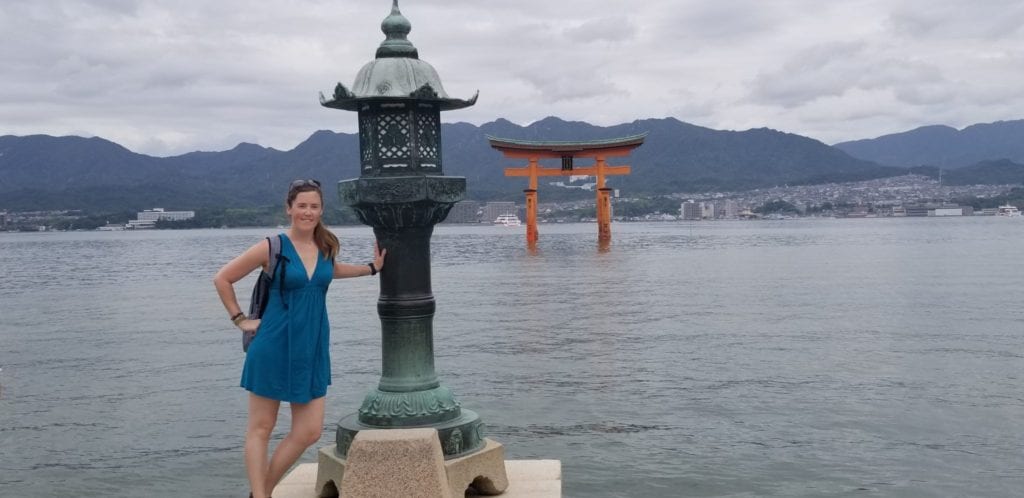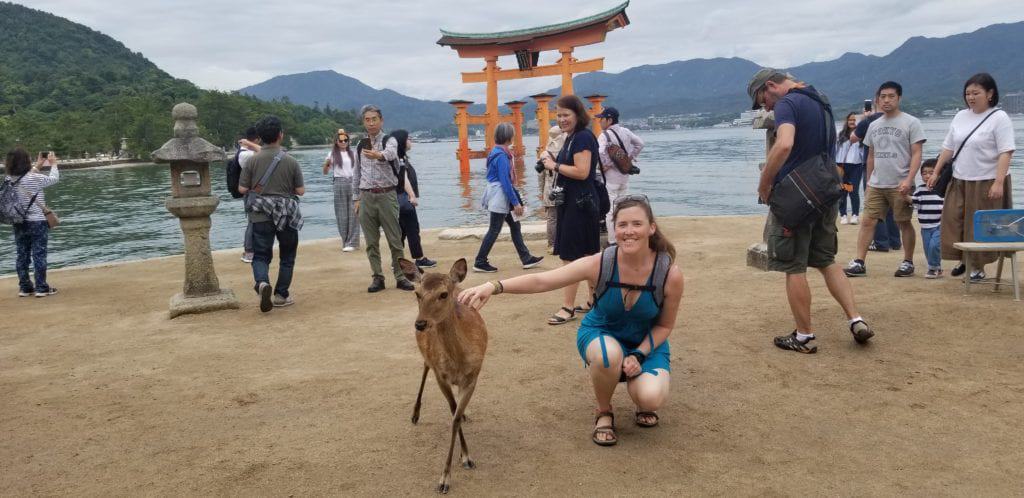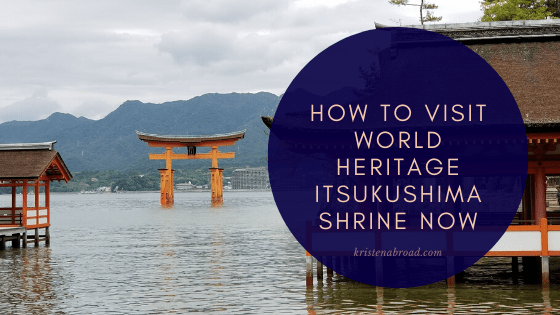What do you picture when you think of Japan? Probably Mt. Fuji, but also, likely, an orange torii gate sitting in the water tops the list. Whether you learned of it from Disney Epcot’s World Showcase replica or some other means, you’re probably familiar with Itsukushima Shrine (厳島神社). But perhaps not by name.
A quick ferry ride away from Hiroshima, Itsukushima (厳島) lies in the Inland Sea of Japan. You’ve most likely heard it by another name though, Miyajima (宮島) or “shrine island”. If you want to get elloquent with your translation you could go so far as saying “islands of gods”. A little bit nicer sounding that it’s actual name, in which “厳” can mean “strict”.
[Editor’s Note: This post originally was published in September of 2018 and has been updated for freshness, accuracy and comprehensiveness].
Itsukushima Shrine: What makes it a shrine?
First, a quick lesson. Buddhism and Shintoism have been wrapped together through Japan’s history. How do you tell the difference when you run upon a religious establishment every turn you make? The iconic torii gate signifies a Shinto shrine. Shrine in Japanese is “jinja” or 神社 but it’s possible that they have slight changes like Meiji Jingu (明治神宮, Meiji Shrine) in Tokyo. The torii represents the barrier between the real world and the spiritual and walking under it is part of the cleansing process before you pray to the god of that shrine. The torii gate will show up on maps as well.

Buddhist temples you will notice always have a image of buddha enshrined and though they also have gates, they are distinctively different from a torii gate. Temple in Japanese is “otera” or お寺, the “o” being the honorific. Buddhist temples will be marked with a swastika on maps. Don’t let that throw you off, it’s been used in Buddhism and other cultures way before Hitler got a hold of it.
The Floating Torii Gate
Most iconic is the floating torii gate as it sits in the ebbs and flows of the tide. The current gate is the 8th since the shrine was formed in the 12th century. The torii is one of the Three Views of Japan. What’s that? During the isolation of the Edo period, the Japanese had to get creative with their own country it seems. In Japanese, they are known as 日本三景, Nihon Sankei.

The current torii was constructed in 1875 and as of April of 2020 under going some reconstruction. Something everyone should be able to understand as it is wood sitting in salt water, not the best environment for longevity!
The construction project starts with fixing the “roof” of the torii gate which hasn’t been worked on in 25 years. Followed by painting which I’m surprised has lasted 15 years in the condition it’s in. Additionally there is some reinforcement work being done to the main pillars. In order to do all of these things, they’ve had to make a temporary jetty. So while the pictures may not be quite what they were, just think of it as an excuse to come back!
And let’s not forget about the architecture of the main shrine! Despite repeat reconstructions (actually pretty standard for shinto shrines), it remains in the original style of the Heian Period of which it was built.
Japan: Land of the UNESCO World Heritage Site
Japan has 23 UNESCO World Heritage sites, 19 cultural and 4 natural. When you think of it, that makes it a relatively small bucket list of places to see! While the shrine records show that Itsukushima Shrine has been around in some form since the 5th century, it’s generally accepted in it’s current form from 1168. It was made a UNESCO World Heritage site in 1996.
The actual World Heritage site covers and area of about 14% of the island. The shrine itself as well as the surrounding forest. The buildings are all pretty spectacular and hark to the bright red of the torii.
All in all, the registration includes 17 buildings (main shrine and worship halls), three torii gates, and a five-storied pagoda. There’s some national treasures and important cultural properties mixed in there as well!

Disclosure: Kristenabroad.com is a participant in the Amazon Services LLC Associates Program and other affiliate programs. For some links to products or services in this article, I may earn a small commission by you using my link. The price for you is not affected.
Access and Entrance to Itsukushima Shrine
Miyajima is an island near Hiroshima. I suggest you take the boat ride from the peace park as it’s quite a lovely ride. The other option is to take the train to JR Miyajimaguchi Station and take a ferry across (this ferry is also covered by the JR Rail Pass). It’s a nice walk from the ferry station to the shrine along the water. Oh, and there’s deer here too!

As far as cost to get in, you can either pay 300 円 to just see Itsukushima Shrine or you can get a combined ticket for the Treasure Hall as well for 500 円. The route through the shrine will take you through the beautiful buildings. One note – you’ll need to take your shoes off, be sure to watch out for your feet on the floor boards.

From the ferry terminal, you’ll want to head left and follow the water along to the shrine. You should have noticed it coming in unless it’s foggy, there will be torii along the way!
What to bring
Your camera, of course! I have a Nikon D3400 DSLR that I absolutely love and if I want something lighter, I use my Nikon 1 J5 which has some stellar specifications and you can still find on Amazon even though it’s been archived by the company.
Another thing that’s “required” for any shrine visit is 朱印帳 (shuinchou, temple and shrine seal book). One of the coolest souvenirs you can have (more on that later).
If you want to go during low tide and walk out to get closer to the torii gates, I’d also suggest a microfiber towel of some sort to wipe the sand off.
Other Things to do on the Island
Remember, it’s called “Shrine Island” there’s a few you can check out while you are here! That’s not all that’s here though:
- The shopping Street is super cute (and covered!) so be sure to pick up a souvenir
- You can get nikuman (or meat bun) with local meat inside
- Miyajima Brewing Company is a nice place to relax with some three local beers to try.
- The ropeway will give you a beautiful sky view of the Inland Japan Sea
If nothing else, the deer could entertain me for hours!
Have you been to Itsukushima Shrine yet? Pin this for later.

